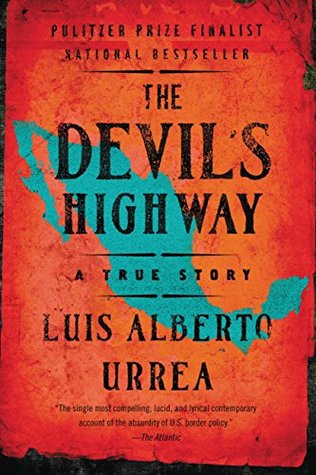More on this book
Community
Kindle Notes & Highlights
The men had cactus spines in their faces, their hands. There wasn’t enough fluid left in them to bleed.
The plants are noxious and spiked. Saguaros, nopales, the fiendish chollas.
Each long cholla spike has a small barb, and they hook into the skin, and they catch in elbow creases and hook forearm and biceps together. Even the green mesquite trees have long thorns set just at eye level.
Much of the wildlife is nocturnal, and it creeps through the nights, poisonous and alien: the sidewinder, the rattlesnake, the scorpion, the giant centipede, the black widow, the tarantula, the brown recluse, the coral snake, the Gila monster. The kissing bug bites you and its poison makes the entire body erupt in red welts. Fungus drifts on the valley dust, and it sinks into the lungs and throbs to life. The millennium has added a further danger: all wild bees in south...
This highlight has been truncated due to consecutive passage length restrictions.
The first illegal immigrants to be hunted down in Desolation by the earliest form of the Border Patrol were Chinese. In the 1880s, American railroad barons needed cheap skilled labor to help “tame our continent.”
In the following years, over four hundred people died of heat, thirst, and misadventure. It became known as the most terrible place in the world. And it’s beautiful.
If it was the Border Patrol’s job to apprehend lawbreakers, it was equally their duty to save the lost and the dying.
Death by sunlight, hyperthermia, was the main culprit. But illegals drowned, froze, committed suicide, were murdered, were hit by trains and trucks, were bitten by rattlesnakes, had heart attacks.
Each corpse generates a case file. Every unidentified corpse represents one case forever left open—you can never close the case if you can never find out who the dead walker was or where he or she came from. But uncollected—unreported—bones generate no files. Besides, how do the agents know if the bones are one hundred years old?
All the agents seem to agree that the worst deaths are the young women and the children. Pregnant women with dying fetuses within them are not uncommon; young mothers have been found dead with infants attached to their breasts, still trying to nurse. A mother staggers into a desert village carrying the limp body of her son; doors are locked in her face. The deaths, however, that fill the agents with deepest rage are the deaths of illegals lured into the wasteland and then abandoned by their Coyotes.
The incense of their death takes over the room. So the women light candles. Once their candles are lit, they bend to the task of trying to find the families back in Mexico so they can deliver their grim news. Many dead walkers come from places with no phones, homes with no addresses.
In one of the million ironies of the desert, those who die of thirst become waterproof. Their fingers turn to stiff leather, and the prints are unreadable.
Much of the human hunting that goes on along the border happens on Cocopah, Papago, Pima, Apache, and Yaqui lands.
A truckload of Indians looks like a truckload of Mexicans to the cavalry.
For a while, the Mexican government offered the walkers survival kits with water and snacks, but the uproar from the United States put a stop to that. Americans saw these attempts at lifesaving as a combination invitation to invade and complimentary picnic basket.


